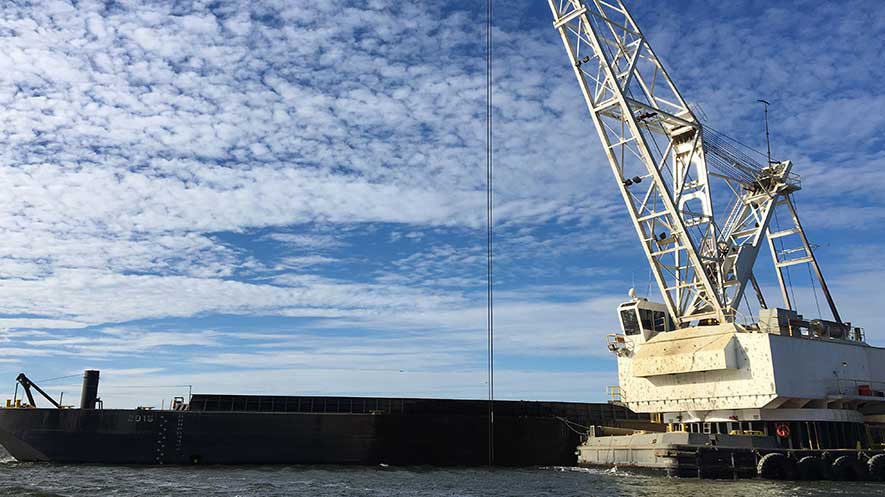You better have your eyes peeled right now if you’re a boat captain in Charleston, South Carolina Harbor. With four dredges spread out throughout the eight square miles of inlet, there’s a lot of activity to monitor.
Right now, the starfishes are aligning and four different dredges are performing three different maintenance projects at one time. Dredges are currently working in the lower and upper harbor, as well as the entrance channel.
“It’s very rare to have this much dredging activity at one time in Charleston,” said Wes Wilson, USACE project manager. “Each area of the harbor has a different time frame, but they happened to all line up this year.”
Wilson’s right about the rarity. Normally, the lower harbor is dredged every 12 months, the upper harbor every 18 months, and the entrance channel every 24 months. That means they should only be working at the same time every six years.
The entrance channel work this year wasn’t even originally planned for this time period. The work being done by the hopper dredge Glenn Edwards started in 2016, but was halted as the timeframe crawled into turtle nesting season after the dredge got a late start due to responding to the flooding in the Mississippi in 2015.
“Sometimes our schedules have to be flexible based on availability,” said Wilson. “Emergency projects take precedence over maintenance projects.”
That’s the case with the upper harbor dredging as well, where the two pipeline dredges Brunswick and Cherokee are working simultaneously to make up for lost time from their previous job.
Finally, the lower harbor is getting its annual maintenance done by the dredge Peter de Jong. This is the first ever project for the newly christened Peter de Jong, where it is scooping material off the harbor floor and transporting it to the Ocean Dredged Material Disposal Site off-shore to dump in the same place as the Glenn Edwards.
In all, approximately $20 million is being spent to relocate more than 373,000 dump trucks of silt and other material from the harbor floor to other locations. When all the work is completed by the end of March, the federal channel portion of Charleston Harbor will be at its required depth, providing the opportunity for safe navigation for all ships.
By: Sean McBride, Public Affairs Specialist, USACE – Charleston District





